INTRODUCTION
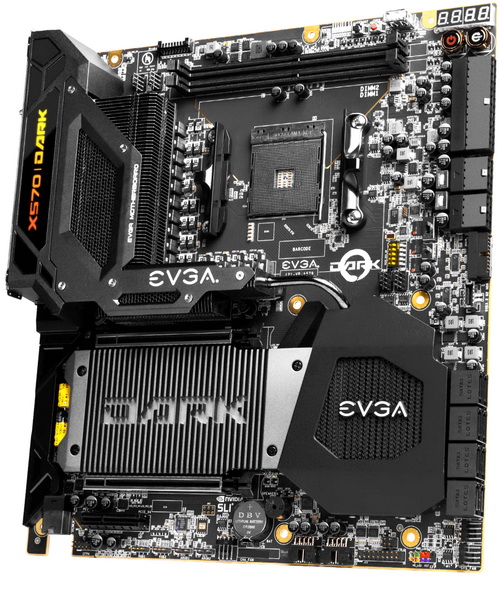
Thanks to support for Intel's latest Core i9-12900k CPU and DDR5 RAM Z690 motherboards may sit at the top of the consumer market currently but it's no secret that until now both the Z590 and X570 motherboards have been the weapon of choice for Intel and AMD users alike (demanding ones anyways). Now even though AMD should be unveiling their X670 chipset in a few months (most likely by March or April - delays aside due to chip shortage) since from all the motherboards to arrive in the lab only a single one was based on the AMD X570 chipset (every other was based on the Intel Z490/Z590 ones) i wanted to close 2021 with yet another such review and so today with me i have the one model every enthusiast and overclocker using an AMD Ryzen 5000 CPU was looking forward to, the X570 DARK by EVGA.
EVGA is the #1 NVIDIA authorised partner in channel sales throughout North America and UK. Based on the philosophy of intelligent innovation, market knowledge, and the real time operation, EVGA continues to identify the need in the market place and providing the solution to that need. By offering product differentiation, a 90 day Step-Up programme, and other customer focused programmes, EVGA is a clear leader in all categories: etail, retail, distribution, and system integration. With headquarters in Brea, CA, EVGA's global coverage includes EVGA GmbH in Munich, EVGA LATAM in Miami, and EVGA Hong Kong.
Just like with their Z590 DARK motherboard EVGA has used a rather industrial look/design for their X570 DARK model so no problems in that regard (at least not from me). The X570 DARK is aimed towards enthusiasts and overclockers so aside the three PCIe Gen 4.0 slots (two x16 EMI shielded and reinforced ones and one regular x4) and two PCIe Gen 4.0 M.2 slots it's also equipped with a 17-phase digital VRM which is cooled by a large heatsink paired with two fans (probably 40mm ones). Of course the X570 DARK also sports two DIMM slots (dual-channel configuration – 64GB total supported with speeds exceeding 4800MHz), dual Intel I225-V 2.5GbE LAN ports, AX200 Dual-Band WiFi 6/BT 5.2 (2x2 antenna based), NU Audio amplifier (for stereo speakers and headphones/headsets), Realtek ALC1220 High Definition Audio onboard audio card, ARGB compatibility (onboard ARGB, two RGB and two ARGB headers), eight native SATA 6Gb/s ports (support RAID 0/1/10), probeit connector and right angled ports (power and SATA). Needless to say, once again we find numerous features aimed towards serious overclockers including PCIe disable switches (allow the end user to disable PCIe slots for troubleshooting), CPU slow-mode switch (can be used to change the CPU ratio on-the-fly to minimum), triple BIOS selection switch, safeboot button (boots directly into the BIOS without changing your settings - handy if your system will not boot with those settings) and two multi-function indicators. As for rear connectivity here, we find a PS/2 connector, 2 USB 3.2 Gen 1 ports, 2 WiFi/BT Antenna ports, 4 USB 3.2 Gen2 ports, 2 Intel I225-V 2.5GbE RJ45 ports, USB 3.2 Gen2 type-C port and the optical out and analog audio ports. EVGA seems to have released yet another top-of-the-line model with the new X570 DARK so let's see what it's capable of.
SPECIFICATIONS AND FEATURES

PACKAGING AND CONTENTS
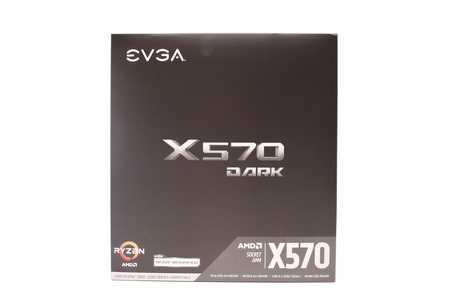
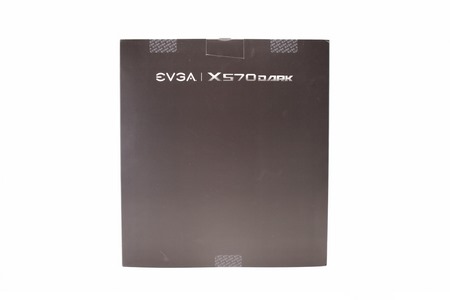 EVGA once again packs their latest DARK model inside a black box that has their logo, model name and AMD Ryzen logos at the front and rear (well, minus the Ryzen logo at the rear).
EVGA once again packs their latest DARK model inside a black box that has their logo, model name and AMD Ryzen logos at the front and rear (well, minus the Ryzen logo at the rear).
The box is also black inside and as you can see the motherboard is placed right between two black pieces of foam (the rest of the bundle is placed inside an accessory kit box).
In terms of bundle EVGA leaves nothing out so once again aside the motherboard itself the box also contains a full size virtual guide (made out of thick plastic), dual WiFi Antenna, four SATA 6Gb/s Cables, probeit voltage measurement connector, two M.2 Thermal Pads, two M.2 screws, motherboard mounting screws, 10 very tall standoffs, plastic case badge, compact USB flash drive (contains the initial drivers) and the installation guide.
THE X570 DARK
The plastic virtual guide is one of the things that makes all EVGA motherboards stand out from the crowd and i personally consider it to be very useful.
If you've already seen my Z590 DARK review then the X570 DARK is very similar in terms of design.
The large aluminum heatsink paired with the two fans (40mm ones?) should be enough to cool the 17-phase digital VRM of the X570 DARK.
The more DIMM slots the less stable a system usually is (if you populate all of them that is) so EVGA has once again used two which support RAM up to 64GB in capacity and 4800MHz+ in frequency.
Typically for an EVGA DARK motherboard on the top left corner we find the USB port used for BIOS flashing, two LED post indicators and the safeboot (black), clear CMOS (red button), power on/off and reset buttons.
Moving further down we find the PCIe disable switches, slow-mode switch and the triple BIOS switch.
EVGA using angled connectors is for the most part a good thing.
The extra 6-pin PCIe power connector is once again located on the lower left corner (according to EVGA this connector provides dedicated power to the PCIe x16 slots, augmenting the +12V power provided by the 24-pin and the GPU directly).
The Realtek ALC1220 onboard audio card is located just next to the rear I/O and the NU Audio amps.
As mentioned earlier the X570 DARK features two full-length EMI shielded (and reinforced) PCIe 4.0 x16 slots and a single PCIe 4.0 x4 slot.
Removing the large aluminum heatsink reveals the two PCIe 4.0 M.2 slots.
Moving at the rear I/O we find the PS/2 connector, two USB 3.2 Gen1 ports, two Antenna connectors, reset CMOS button, four USB 3.2 Gen2 ports, two 2.5GbE Ethernet ports, single USB 3.2 Gen2 Type-C port and the analog/digital audio outputs.
Once again, no rear support plate, just the model name.
For this review I’ll be using the Sabrent Rocket 4 Plus 4TB as primary drive and the AMD Ryzen 5900X.
Of course, I’ll also be using the Acer Predator Apollo 32GB 4000MHz DDR4 RAM kit just like with all my Z590/X570 reviews.
X570 DARK V1.03 BIOS
EVGA is using almost the same BIOS as with their Z490/Z590 models so once again it has a total of 6 tabs and almost everything related to CPU overclocking is placed under the OC Tab. Here you can change the multiplier, set the BCLK frequency and of course adjust every voltage you could ever want to or have the need for.
As expected from the Memory tab you can use one of the available XMP profiles, set the frequency, adjust voltages and of course you can also adjust the timings.
Under the Advanced tab you can access the various CPU technologies, check information on the CPU and of course adjust everything else related to the mainboard and all the included peripherals such as the audio card, LAN and fans (resizable BAR support is present as well).
Of course, as always you can adjust the time and date and all the various boot options from the Boot tab.
Inside the save and exit tab you can save your BIOS settings into various profiles, override the boot sequence and restart the system.
Under the extras menu you can find a very convenient CPU stress test, automatic overclock feature, several OC profiles by KINGPIN and Luumi and the BIOS update option.
The OC Robot function worked like a charm on my test bench so you might want to give it a try.
ELEET X1 SOFTWARE
As you can all see here you have almost every CPU overclock setting available in the BIOS, just easier and faster to navigate.
The software also has a health monitoring tool available alongside information on the system.
There's also a lighting adjustment tab for both the onboard and ARGB/RGB headers (9 effects).
Finally the software also has a WiFi tab which displays current signal strength.
TESTING METHODOLOGY
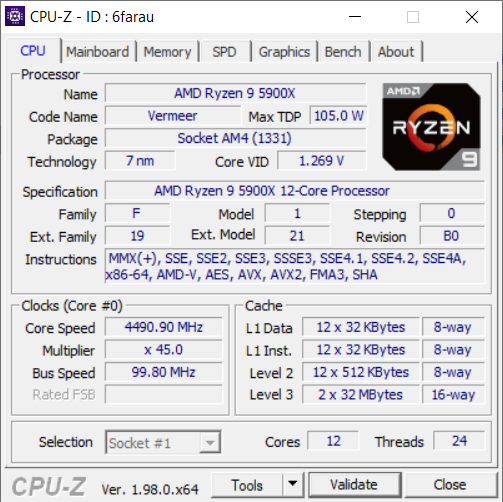
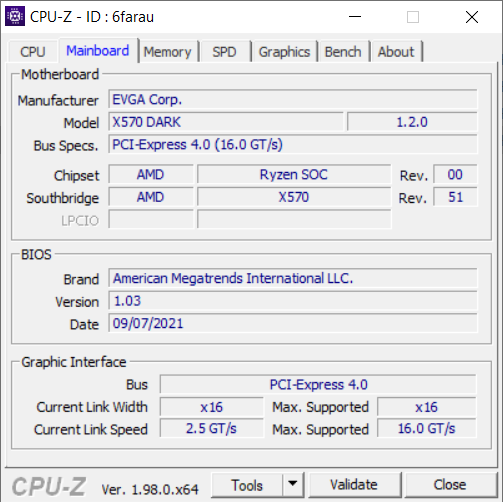
Exactly like used to do in the past each mainboard to arrive in the lab will get mounted on an open-air test bench and will be used for no less than two full weeks (daily tasks and gaming) with a fresh Windows 10 Pro installation. All motherboards arriving here will be tested with the top CPU of that line available to me at the time of each review (I9-9900K for Z390/I9-10900K for Z490/I9-11900K for Z590/Ryzen 9 5900X for X570 and B550) together with 16GB (2x8GB) DDR4 4GHz RAM for the Z390/Z490 motherboards and 32GB (2x16GB) DDR4 4GHz RAM for the Z590 and X570S/B550 motherboards. Now I don’t know if I will need to change this anytime soon but for now the Intel CPU in each review will be set at 5000MHZ (CPU ratio set to 50 - of course voltages may vary slightly from motherboard to motherboard - RING/Cache frequency at 4700MHZ) and the AMD CPU at 4500MHz.
I did think about pushing each motherboard to the max to see which is the better overclocker but 5/4.5GHZ 24/7 is more than plenty today, not only in terms of performance but also temperatures (not to mention there are colleagues of mine who have been focusing on maximum overclock potential so that’s also out there). Instead i decided that it'd be far more interesting (not to mention accurate) to see which motherboard is the fastest when using the same exact hardware components/configuration (CPU/RAM/COOLER) with the same exact overclocking frequencies */**. To figure that out I’ll be using several benchmarking programs (6 repeats after which the average numbers will get recorded in the charts) like AIDA64, CINEBENCH R20, CPUZ, Passmark Performance Test, RealBench and the Sisoftware Sandra Titanium 2020 version. Needless to say, that between different system configurations these charts also do a great job pointing out the difference in CPU performance.
* Charts will contain other system configurations as well in order to better showcase the performance of each reviewed system.
** Surpassing 4.7GHz with the Ryzen 9 5900X on all cores proved impossible so I chose 4.5GHz as the most balanced choice for all my tests (besides, the latest Intel CPUs in the charts could also climb higher than 5GHz on all cores).
TEST RESULTS - AIDA64 / CINEBENCH R20


TEST RESULTS - CPUZ / PASSMARK PERFORMANCE TEST
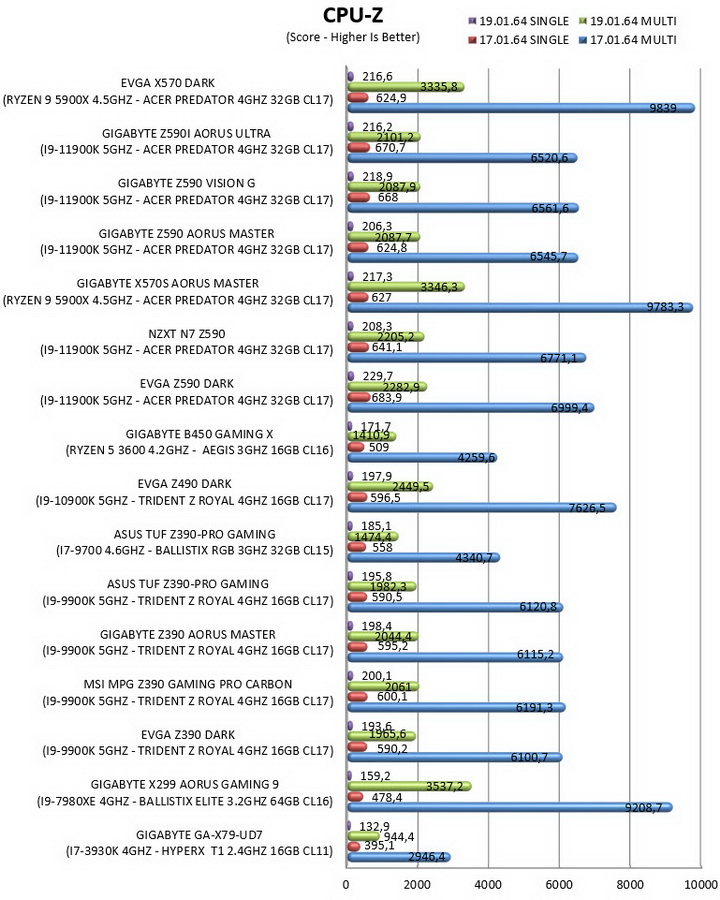
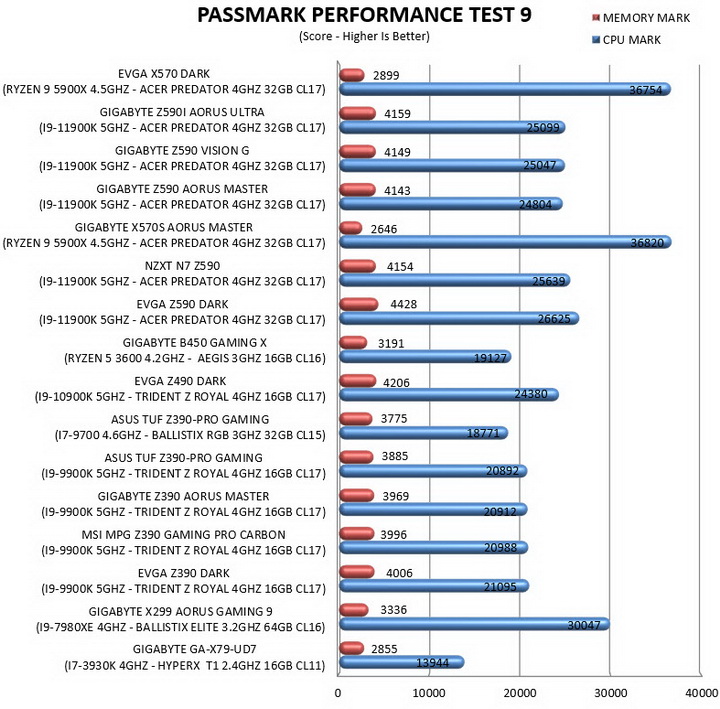
TEST RESULTS - REALBENCH / SISOFTWARE SANDRA TITANIUM 2020
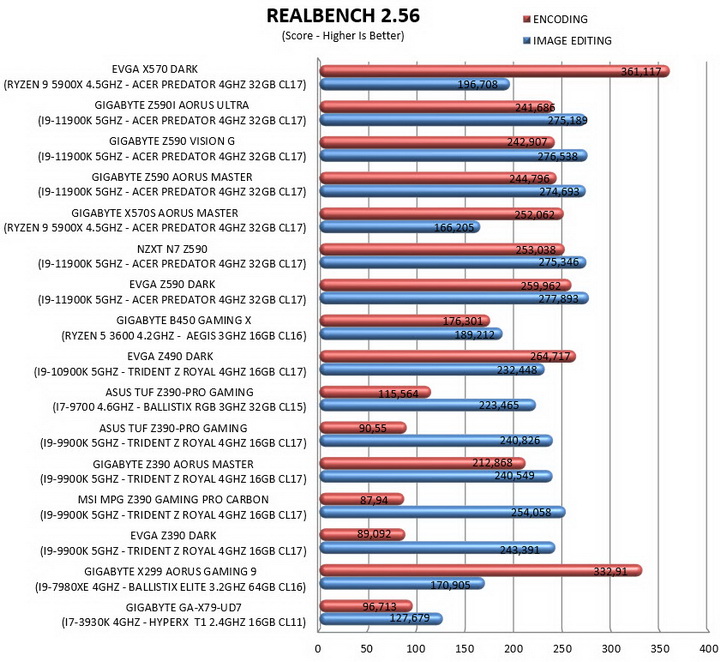
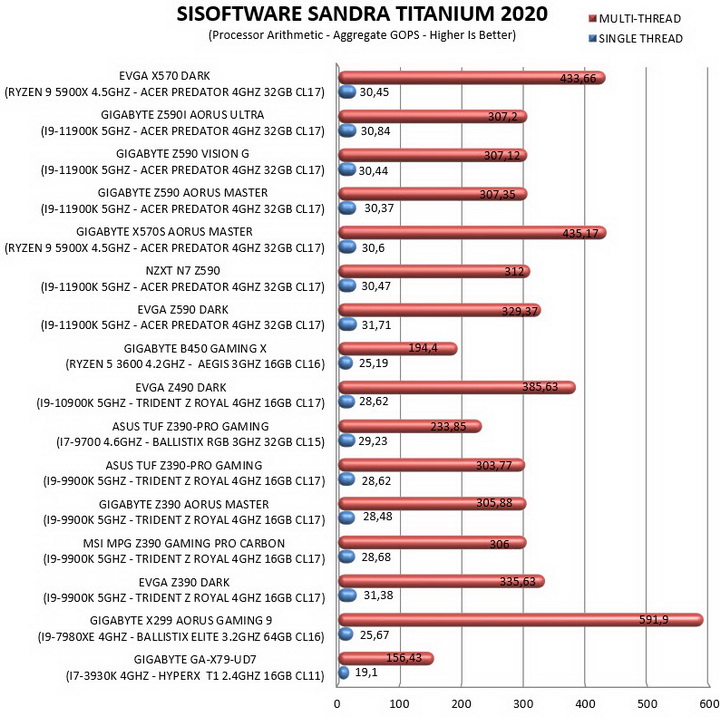
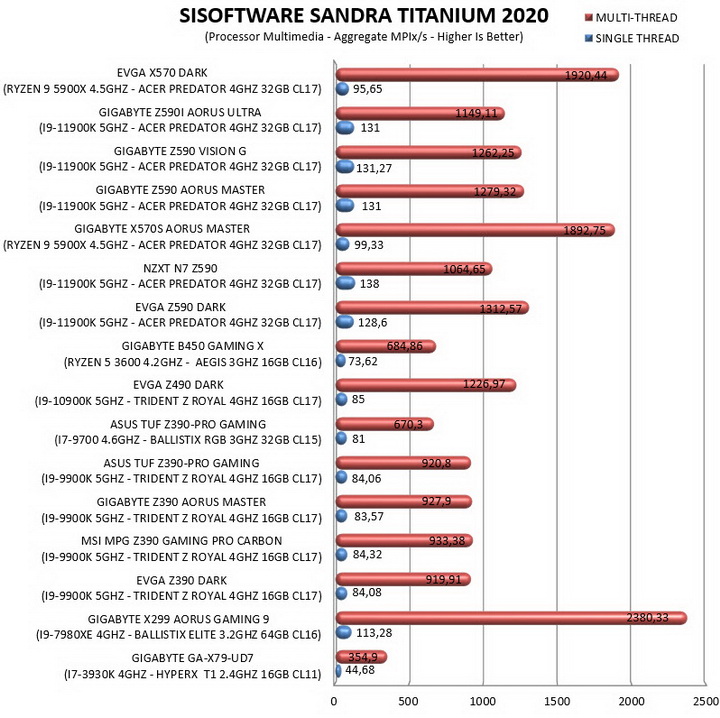
CONCLUSION
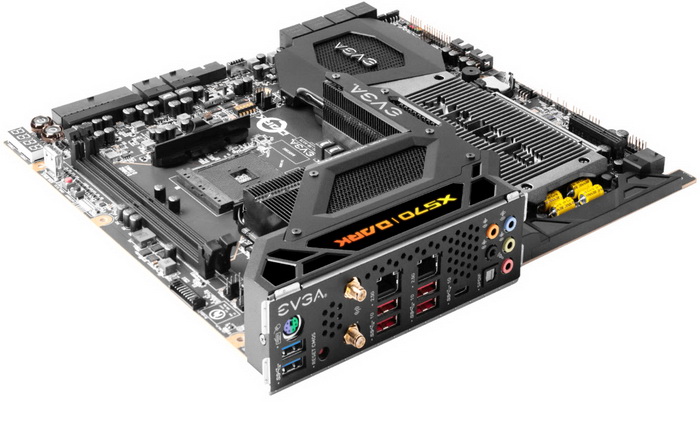
When I checked the early pictures and specifications for the X570 DARK many months ago I have to admit that it felt just as good as the Z590 DARK model. Unfortunately, however unlike Intel motherboards AMD has chosen to “link” RAM performance directly with their CPUs and so anything over 4GHz needs way too much tweaking to use (both in terms of voltage and timings). Curiosity got the better of me and so i did try with the Faye 16GB 5GHz kit by Neo Forza but even 4400-4600MHz was very hard to achieve (again, much higher voltage needed with higher CAS latency – was unable to go any higher – didn’t push the motherboard a lot however). Of course, with a very fast CPU like the Ryzen 5900X even 4GHz is extremely good (lower timings matter quite a but too) but i truly hope AMD improves things with their upcoming line. As for everything else well not much i can say, the X570 DARK scores high all across the board and even though for the most part it exchanges blows with the GIGABYTE X570S Master overall it’s slightly better (VRM and CPU temperatures were also less so you should be able to squeeze even more in terms of performance).
With 2 days left until Christmas the X570 DARK motherboard by EVGA retails for no less than USD689.99 inside the USA (evga.com) and that’s pretty much it’s sole downside. Of course, the X570 DARK is not alone in that price segment but even so this isn’t what I’d call an affordable motherboard. That being said however the EVGA X570 DARK is probably the best overclocking motherboard in the market today so if that’s your goal you simply can’t go wrong with it and that’s why it gets the Platinum Award.

PROS
- Build Quality
- OC Potential (Actively Cooled 17 Phase Digital VRM)
- 2 Reinforced & EMI Shielded PCIe 4.0 slots
- OC Features (PCIe Disable Switches / Slow Mode / Safe Boot / Triple BIOS / Dual Clear CMOS Buttons / USB BIOS Update Port)
- Dual M.2 PCIe 4.0 Slots
- ARGB Lighting
- Available BIOS Settings
- NU Audio Amplifier
- Angled Connectors
- Dual 2.5GbE Ports
- Bundle
- 3 Year Limited Warranty
CONS
- Price (For Some)
- Dual DIMM Design (For Some)
- Only 3 PCIe Slots
- Supported RAM Speeds

 O-Sense
O-Sense





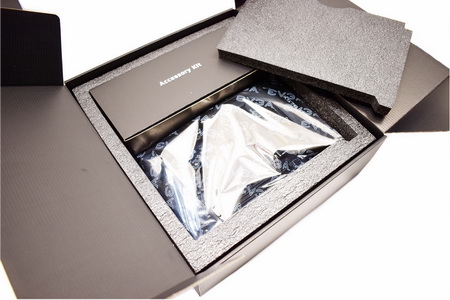
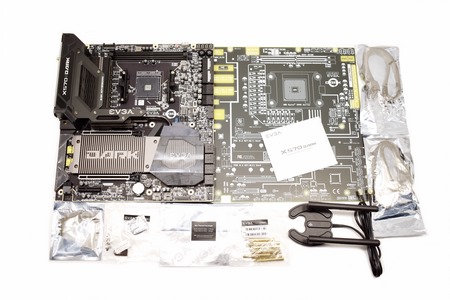
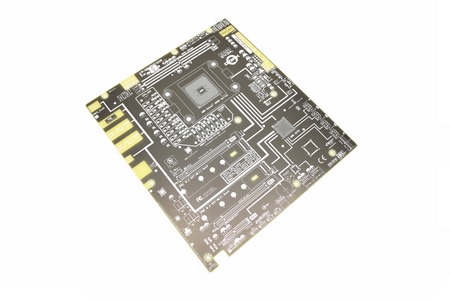
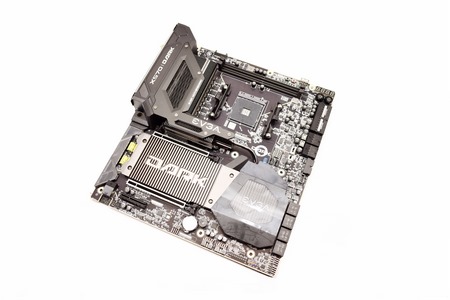
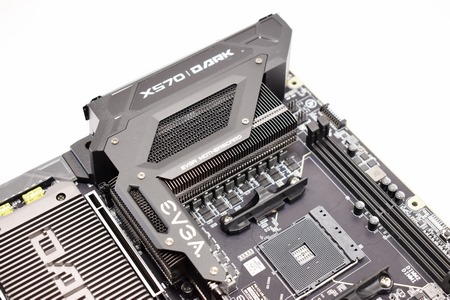
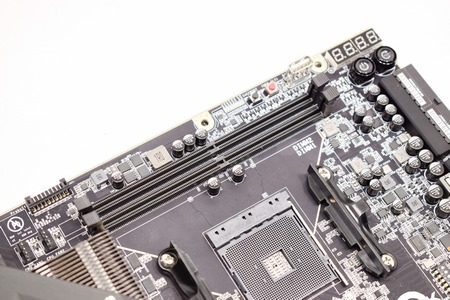
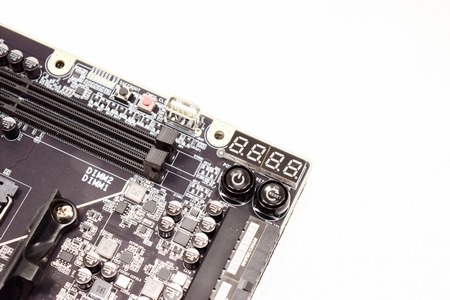
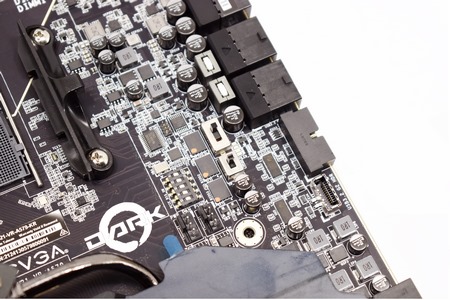
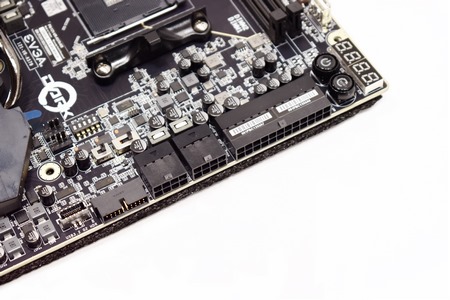
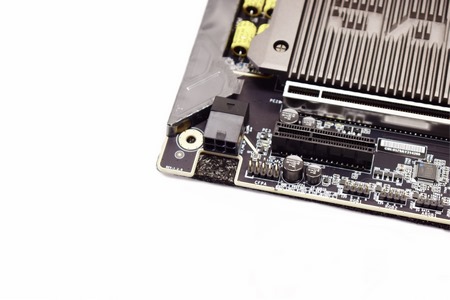
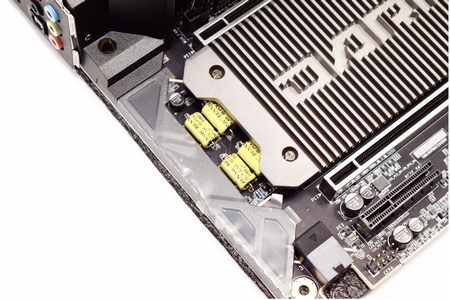
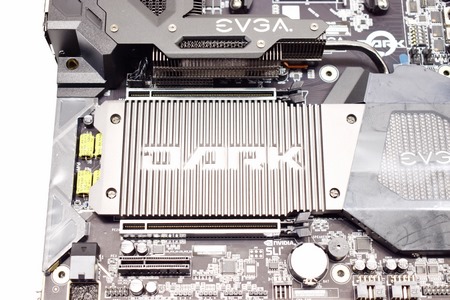
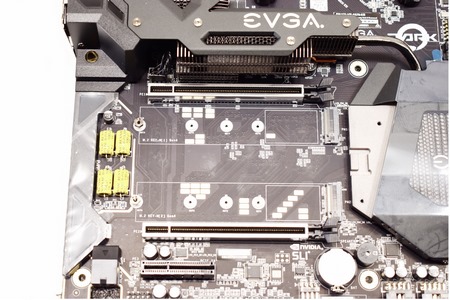
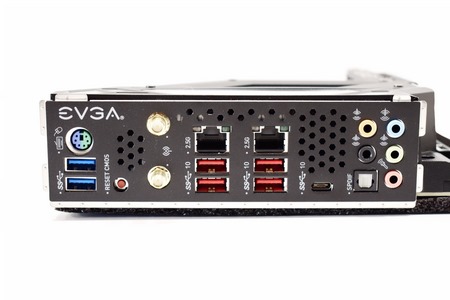
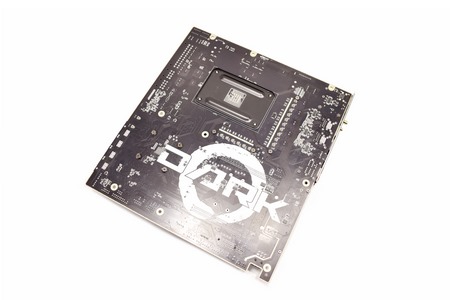
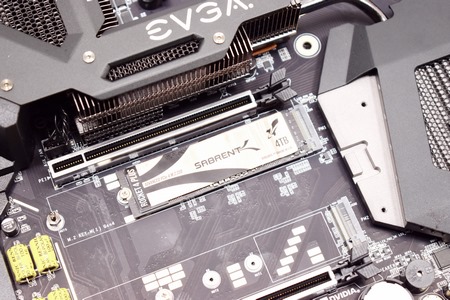
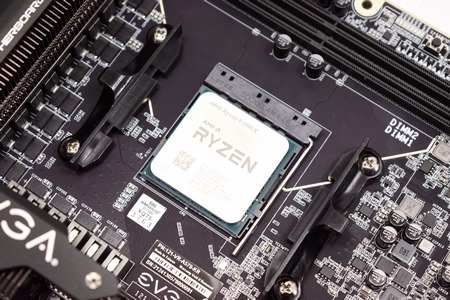
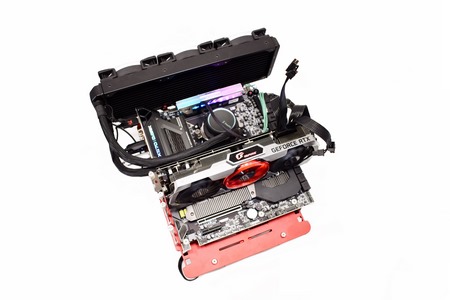
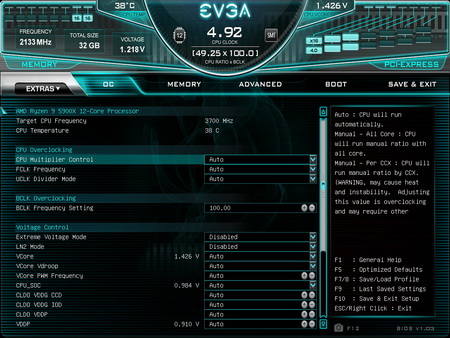
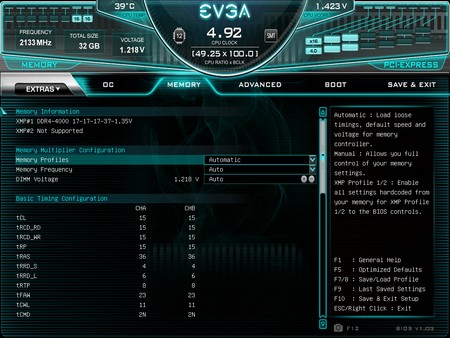
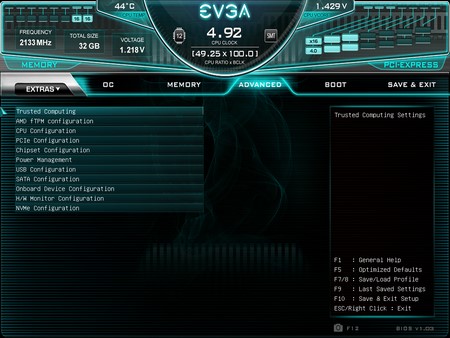
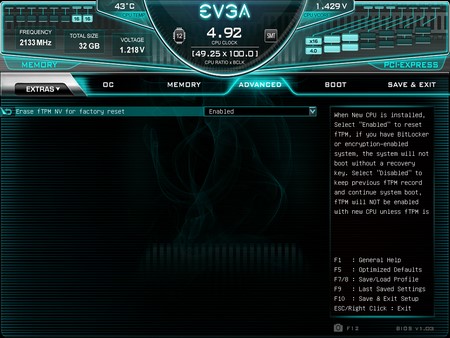
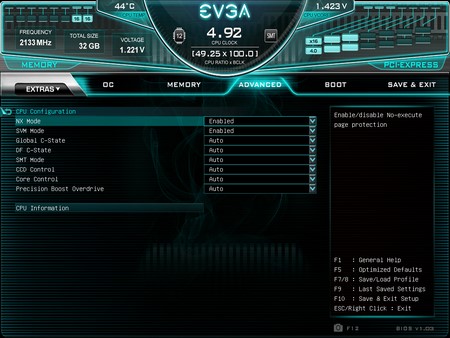
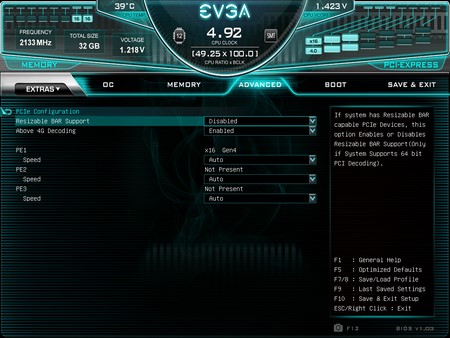
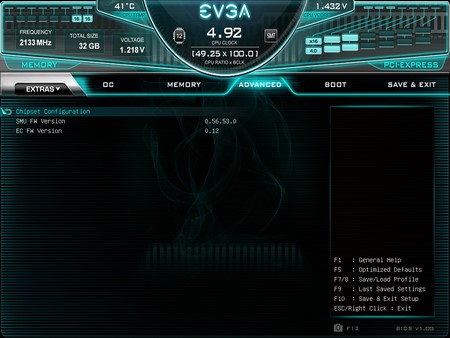
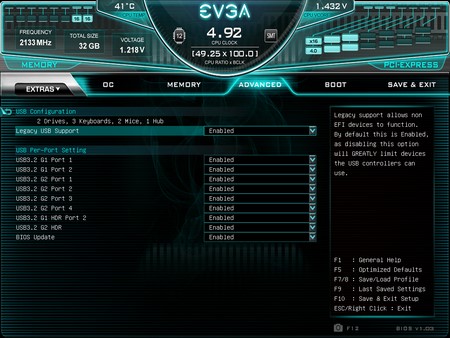
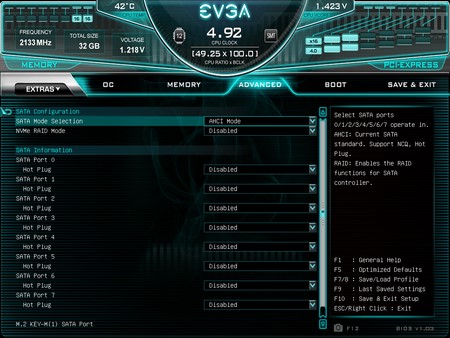
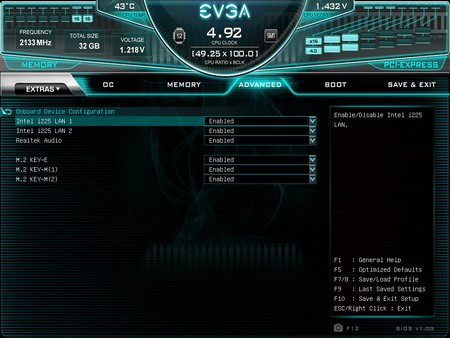
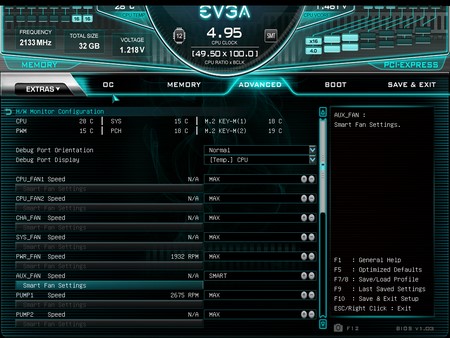
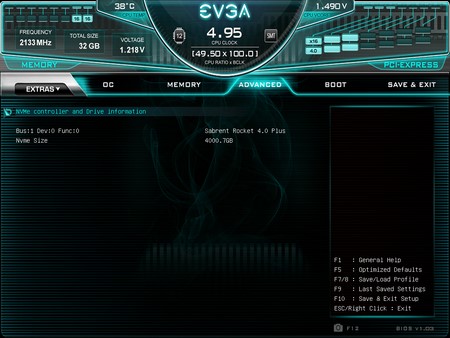
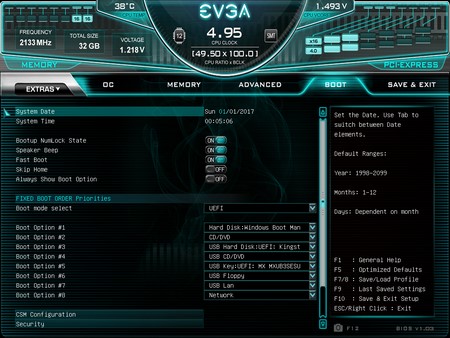
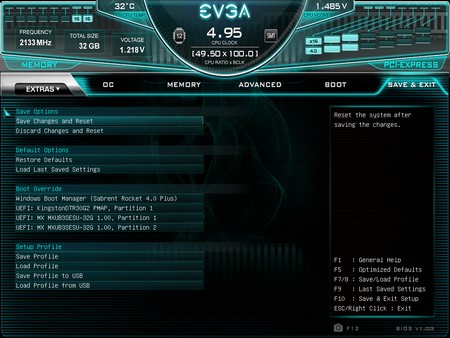
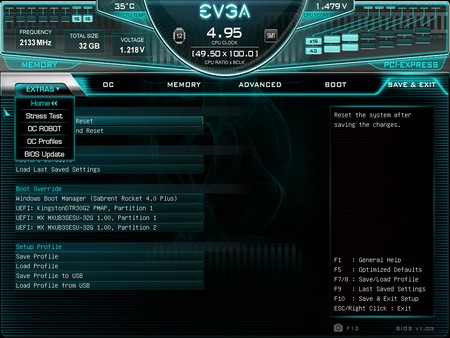
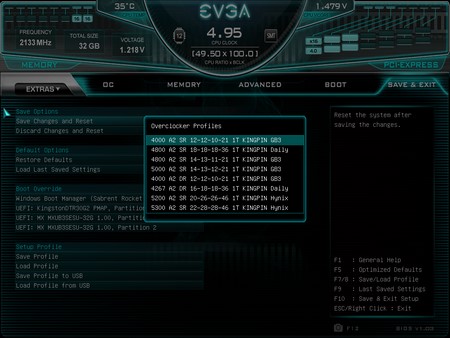
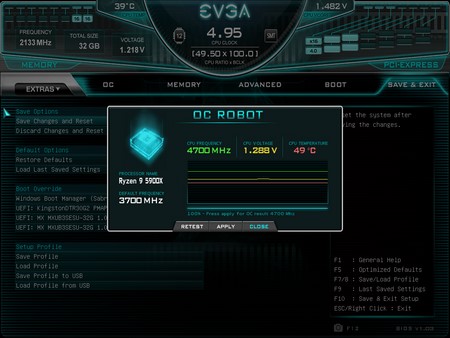
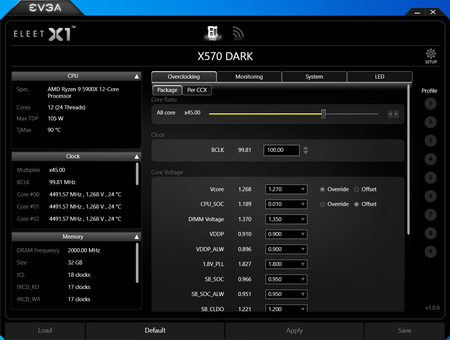
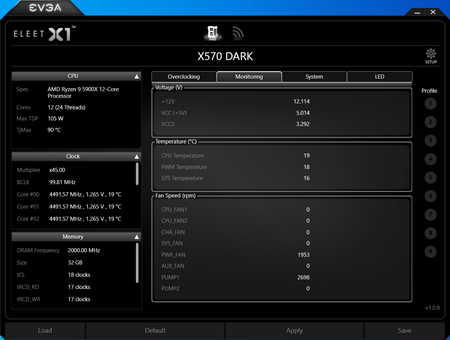
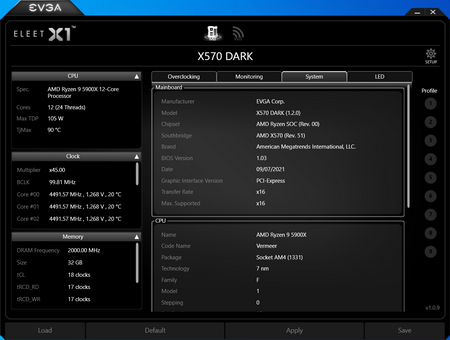
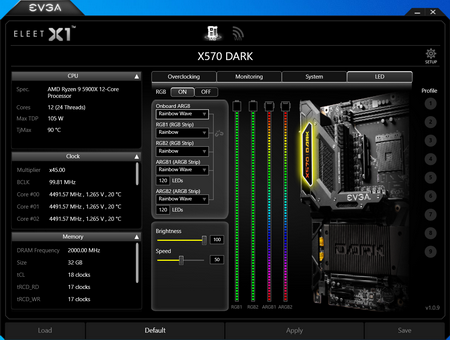
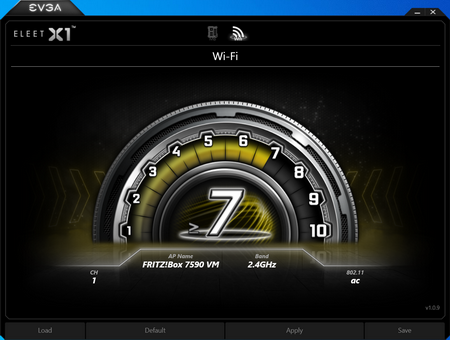


.png)

